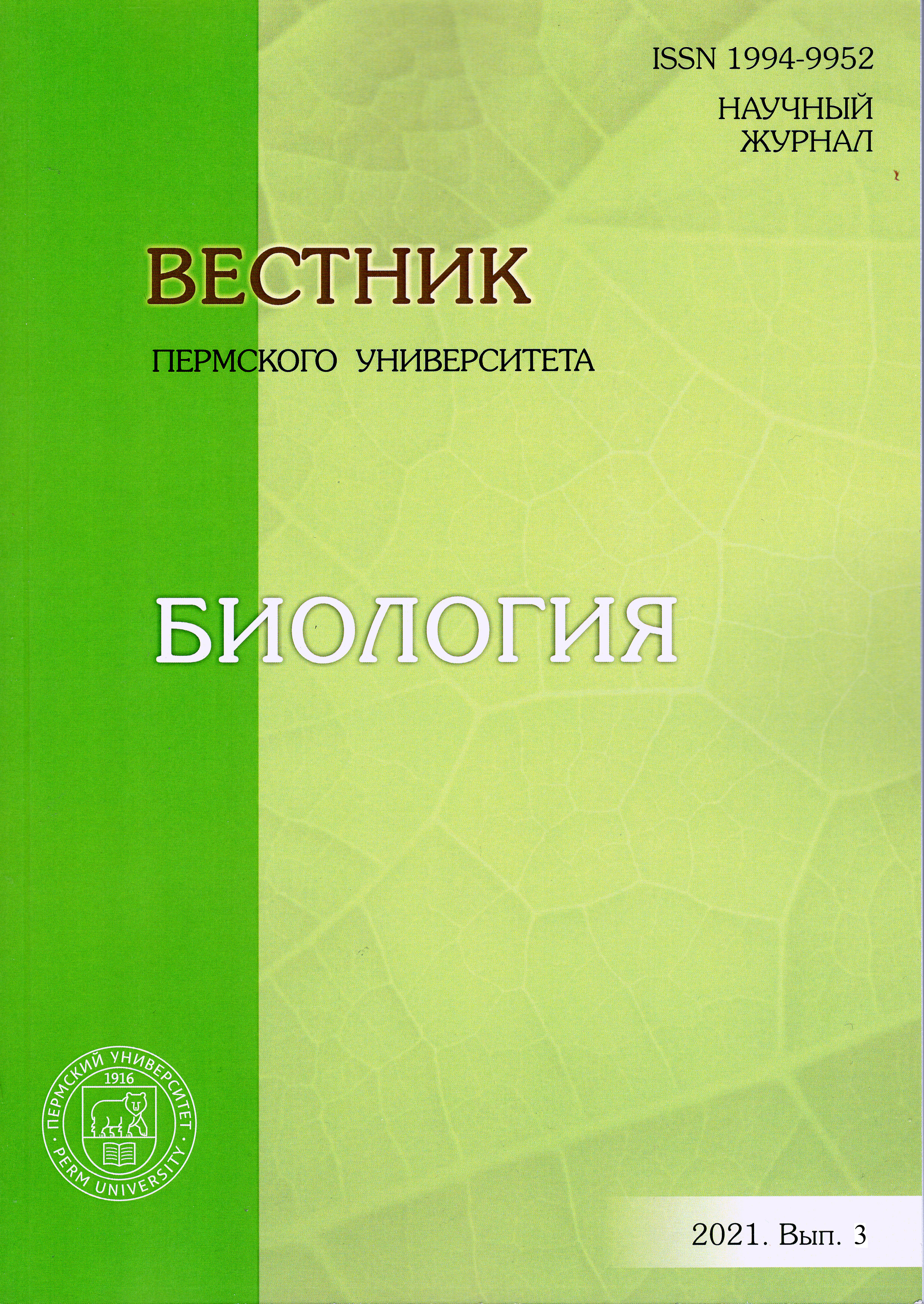Morphological aspects of adaptation of the alkalophilic bacteria Bacillus aequororis to high salinity and alkalinity of the medium
Main Article Content
Abstract
Article Details
References
Деткова Е.Н., Пушева М.А. Энергетический метаболизм галофильных и алкалофильных ацетогенных бактерий // Микробиология. 2006. Т. 75, № 1. С. 5–17.
Коршунова И.О. и др. Влияние органических растворителей на жизнеспособность и морфофункциональные свойства родококков // Прикладная биохимия и микробиология. 2016. Т. 52, № 1. С. 53–61.
Максимова А.В., Кузнецова М.В., Демаков В.А. Влияние синтетических нитрилов на морфологию и жизнеспособность некоторых видов бактерий // Известия РАН. Сер. биол. 2016. № 6. С. 631–637.
Морозкина Е.В. и др. Экстремофильные микроорганизмы: биохимическая адаптация и биотехнологическое применение (обзор) // Приклад-ная биохимия и микробиология. 2010. Т. 46, № 1. С. 5–20.
Шилова А.В., Максимов А.Ю., Максимова Ю.Г. Выделение и идентификация алкалотолерантных бактерий с гидролитической активностью из содового шламохранилища // Микробиоло-гия. 2021. Т. 90, № 2. С. 155–165.
Beech I.B. et al. The use of atomic force microscopy for studying interactions of bacterial biofilms with surfaces // Colloids and Surfaces B: Biointerfaces. 2002. Vol. 23. P. 231–247.
Borkar S. Alkaliphilic Bacteria: Diversity, Physiology and Industrial Applications, Chapter 4 // Bioprospects of Coastal Eubacteria. Switzerland: Springer International Publishing, 2015. P. 59–83.
Bremer E. Adaptation to Changing Osmolanty // Ba-cillus subtilis and Its Closest Relatives. Eds. A. Sonenshein, R. Losick, J. Hoch. Washington, ASM Press, 2002. P. 385–391.
Dhakar K., Pandey A. Wide pH range tolerance in extremophiles: towards understanding an important phenomenon for future biotechnology // Applied Microbiology and Biotechnology. 2016. Vol. 100. P. 2499–2510.
Dorobantu L.S., Goss G.G., Burrell R.E. Atomic force microscopy: A nanoscopic view of microbial cell surfaces // Micron. 2012. Vol. 43. P. 1312–1322.
Glebov G. et al. Combined CLSM/AFM study of rhodococcus cell interactions with zinc oxide nanoparticles // Высокие технологии, определяющие качество жизни: материалы II Междунар. науч. конф. Пермь, 2018. С. 30–31.
Krulwich T.A., Sachs G., Padan E. Molecular aspects of bacterial pH sensing and homeostasis // Nature Reviews Microbiology. 2011. Vol. 9. P. 330–343.
Oren A. Microbial life at high salt concentrations: phylogenetic and metabolic diversity // Saline Sys-tems. 2008. 4 : 2. DOI: 10.1186/1746-1448-4-2
Stukalov O. Use of atomic force microscopy and transmission electron microscopy for correlative studies of bacterial capsules // Appl. and Environ. Microbiol. 2008. Vol. 74, № 17. P. 5457–5465.
Yu M., Ivanisevic A. Encapsulated cells: an atomic force microscopy study // Biomaterials. 2004. Vol. 25. P. 3655–3662.
Zolock R.A. et al. Atomic force microscopy of Bacillus spore surface morphology // Micron. 2006. Vol. 37. P. 363–369.




